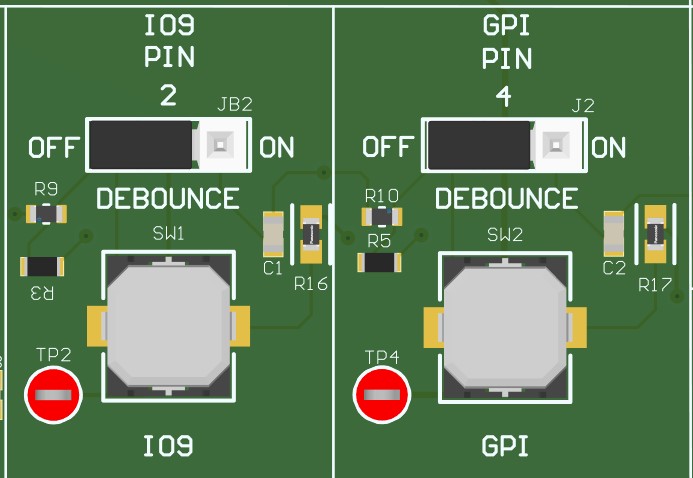SCEU027B November 2023 – October 2024 TPLD1201
PRODUCTION DATA
2.2.2 Switch Blocks
Each SW block consists of a tactile switch and an optional debounce circuit. The switch can be connected to the corresponding TPLD pin via a 3-position header. One side of the 3-position header, labeled OFF, connects directly to the switch output, and the other side of the 3-position header, labeled ON, connects to a debounce circuit leading to the switch output. The middle pin of the header connects to the corresponding TPLD pin. To connect directly to the switch output, place a shunt between the middle pin of the header and the OFF pin. To connect to the debounce circuit, place a shunt between the middle pin of the header and the OFF pin. If no shunt is placed between either set of pins, the switch is not connected to the TPLD pin.
 Figure 2-4 Switch Blocks
Figure 2-4 Switch Blocks